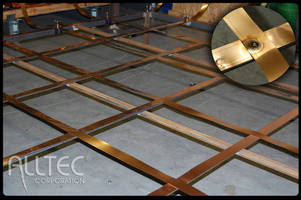Signal Reference Grids: Grounding Solutions with Exceptional Results

Proper bonding and grounding are essential factors in today's quest for ultimate power quality, and it is critical to have a system that is driven by both safety and performance. Alltec Corporation's Signal Reference Grids (SRGs) are used around the world in communication/data centers to reduce static and noise and to protect equipment. SRGs are cost-effective, easy to maintain, and very successful at protecting equipment from voltage surges.
The Need for an Equipotential Plane
Electronic equipment is typically affected when there is a potential difference between devices. Proper grounding and bonding of sensitive electronic systems, including computer installations, require careful consideration of all frequencies. Alltec's SRGs provide an equipotential plane for equipment where all electronic and electrical equipment connected can rise and fall together. These signal reference grids (SGRs) reduce or eliminate high frequency transients by achieving a common ground reference for all equipment within an adjoining area. The equipotential grid significantly decreases potential differences and diminishes current flow, thereby eliminating the adverse affect on logic circuits.
Requirements
Signal Reference Grid installation is normally required when:
Signal Reference Grids as Grounding Solutions
The purpose of Signal Reference Grids is to enhance the overall reliability of the signal transfer between interconnected items of equipment by reducing the inter-unit common mode electrical noise over a broad band of frequency. All metallic enclosures, conduit, and ductwork should be bonded to the Signal Reference Grid for it to function properly.
Advantages of a well designed Signal Reference Grid
Forms of available Signal Reference Grids
Alltec Corporation designs and manufactures copper wire ground grids for grounding applications. Typical ground grids are manufactured from #6 solid copper on a 6" spacing. All connections are welded with silver brazing or can be exothermically welded for an additional cost. Copper ground grids are available with a continuous perimeter wire or with extended grid wires for making connections to additional grids. For more information on signal reference grids contact us today at 1 800.203.2658 or pr@allteccorp.com. Also, visit our website @ www.allteccorp.com.




